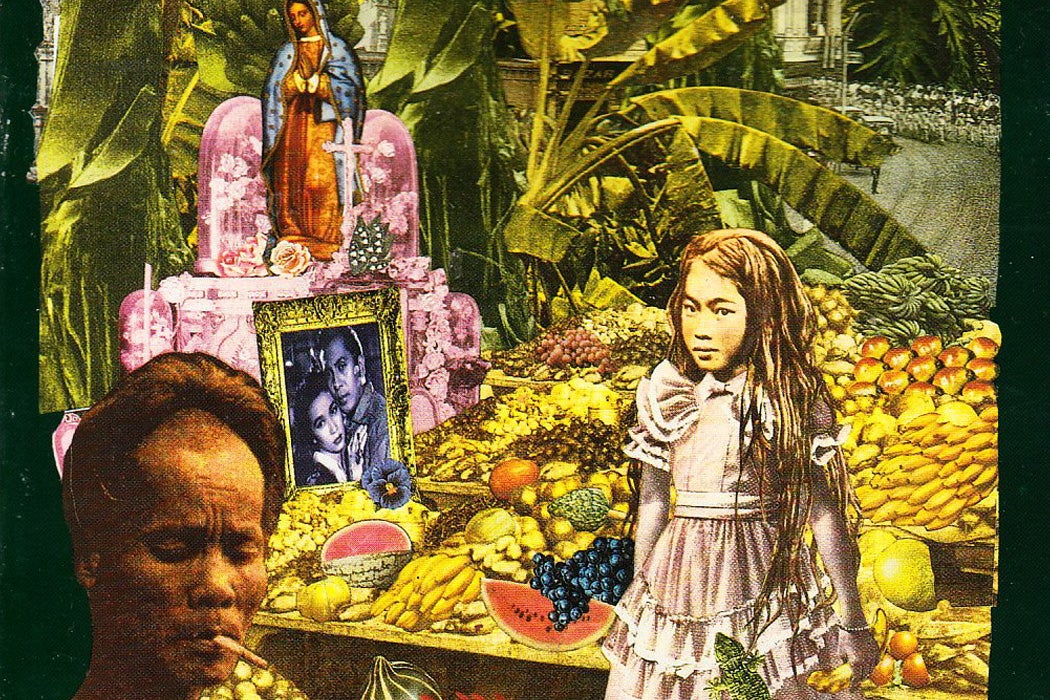One of the most frequently taught novels about the Philippines is Jessica Hagedorn’s 1990 Dogeaters. The novel takes place in the Philippines, a former colony of the United States, in the 1950s. Income inequality is extreme. Political turmoil churns as leftists rise up to challenge the ruling dictator. And in Hagedorn’s fictionalized iteration, the lives of three families of various classes become entangled in revealing ways.
Specifically, Hagedorn focuses on the women living in midcentury Manila, breaking down the ways in which neocolonialism can impact gender. In “Masquerade, Hysteria, and Neocolonial Femininity in Jessica Hagedorn’s Dogeaters,” Asian American literature scholar Juliana Chang finds that there are two forms of ambivalent femininity in the novel: masquerade and hysteria. While psychoanalytic theory has described these forms of femininity as operating under American and Western bourgeois family and closed patriarchal systems, Chang posits that the forms are also relevant in a former colony like the Philippines.
By this theory, masquerade is “a performance of femininity that masks feminine claims to power and covers over other contradictions of patriarchy.” This is exemplified by both the commodified and privileged female characters throughout the novel. The character of Zenaida, a mother whose labor is taken for granted, becomes a symbol of exploitation. Zenaida feels that she is only a surplus laborer; fittingly, she drowns at the end of the novel.
The novel takes place in a time of political turmoil. Hagedorn prominently features the First Lady, rather than the male head of state, as the political face of the country. Chang notes that this privileged figure is another example of “masquerade femininity” and spectacle. Hagedorn’s descriptions of how the First Lady must behave emphasize the pressures of women to be feminine in ways that are acceptable to the patriarchy, down to the grace with which she must wipe her tears.
The hysteric’s role, on the other hand, is “both to arouse and irritate paternal desire.” According to Chang, a character exemplifying hysteria is Baby Alcaran, the daughter of the powerful businessman, Severo Alcaran, and his wife, Isabel. Hagedorn makes a clear distinction between the mother and daughter. The mother is a symbol of upper class femininity. Baby, on the other hand, is often described as having physical traits and characteristics “like a man.” Baby sweats, chews her nails, has “flat breasts” and wide hips. These descriptions refuse the patriarchal normative standard and “insist on its contradictions.”
Weekly Digest
According to Hagedorn, the neocolonialist Philippines held a heteronormative standard that ignored the possibilities of queer and female subjects. The structure of global capital, and the commodification with which human lives and labor are treated in the Americanized colony, only enforce these dominant systems. By representing diverse characters in Dogeaters, Hagedorn offers examples of the contradictory nature of neocolonialism—these characters are people who are not welcomed by the dominant systems, and yet they exist, living and loving in the world of the novel.
Hagedorn’s novel does not rely on tropes, but rather questions how those tropes came to exist. In the end, with its multiplicity of female and queer characters, Dogeaters presents an alternate narrative for the Filipino woman.







